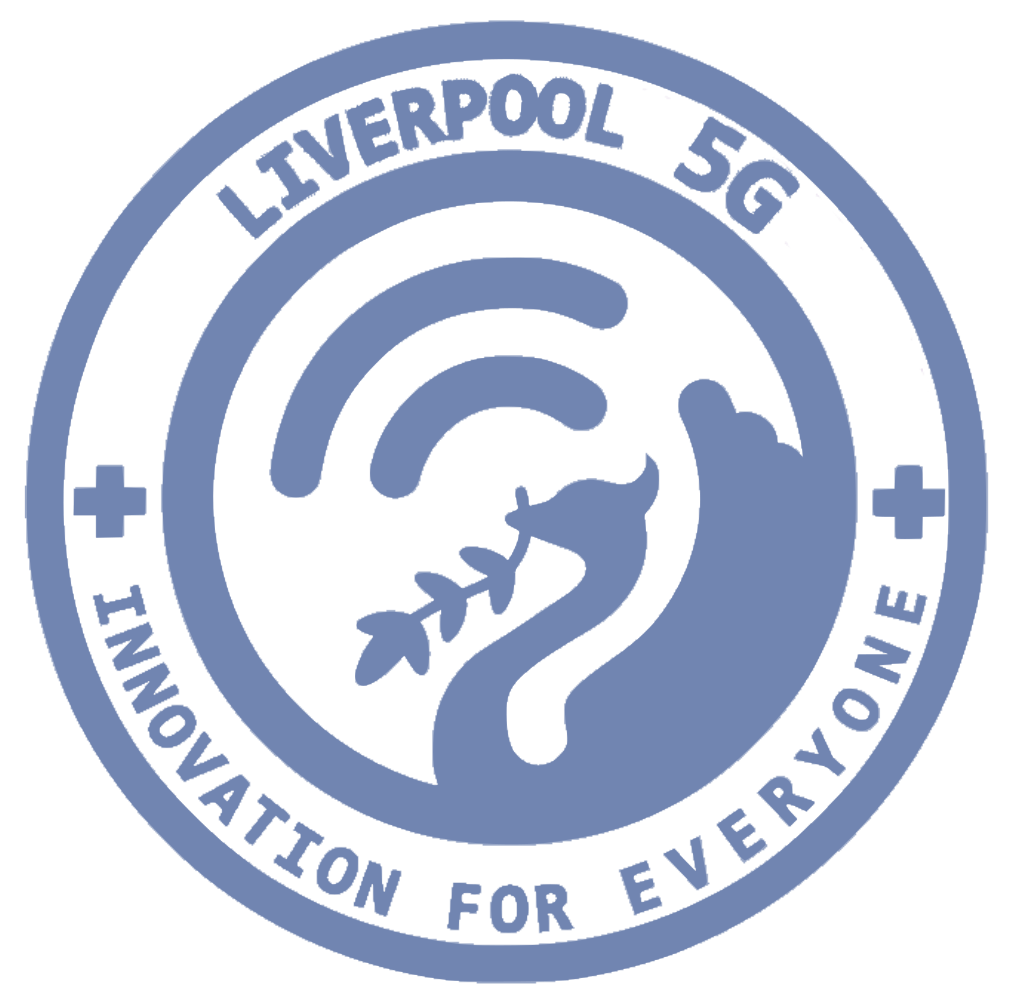What is 5G technology?
5G technology is another name for fifth generation wireless technology. Described as a ‘suite of technologies’, 5G transfers a higher volume of data faster and more reliably than existing technologies.
5G technology benefits from being ‘low latency’, which means there’s a very short delay between sending and receiving information between devices. It is also almost 100% reliable.
Why do we need 5G?
Our homes, cities, transport and services (health and social care) are becoming more connected and reliant on supportive technologies. We use apps, devices (IoT, Internet of Things), virtual/ augmented reality and massive machine-to-machine communications on a daily basis.
Current technologies like 3G and 4G aren’t robust or flexible enough to support this ongoing growth in innovative technologies.
What kind of 5G is the Liverpool consortium using?
Liverpool is combining two 5G technologies: a 3GPP New Radio Standalone access network providing high speed, low latency connections to smart-phones and other devices in the home and Blu Wireless’ 60GHz mm-Wave mesh network providing multi-Gigabit back-haul and direct links to community buildings, health and social care sites.
Our 5G SA network operates in spectrum newly licensed by Ofcom for local and community applications while the mm-Wave mesh benefits from the enormous capacity available in the license free band at 60GHz.
Connections from the streets to Liverpool’s specialist health and social care data-centre on the Innovation Park are completed over the City’s own fibre network infrastructure operating at no less than 10Gbit/s (with plenty of room for growth).
What is the background to Liverpool 5G?
The Liverpool 5G Consortium won over £4 Million from the Department of Culture Media and Sport (DCMS), to take part in a government initiative that explores how 5G technology benefits growth sectors in the UK like health and social care, manufacturing, transport, tourism and agriculture. You can read more about the project here.
How has this project benefited Liverpool?
Liverpool has become part of a 5G network/ eco-system that extends across the UK and beyond. This network provides opportunities for our tech companies, public sector, universities and care providers to tap into cutting edge research and development, whilst accessing markets for the 5G supported technologies we produce.
As part of the Liverpool 5G project, people in Kensington have benefited from access to life-changing technologies that help them manage their health independently at home.
Is the 5G technology being used safely?
The 5G technology we use is in 4GHz (n77) and 60GHz spectrum. Many scientists have carried out national and international research and a large majority agree there are no likely negative health impacts of this technology if guidelines agreed by The International Commission on Non Ionizing Radiation Protection (ICNIRP Guidelines) are followed. ICNIRP has reviewed research from across the world and from organisations like WHO (The World Health Organisation).
For the range of frequencies used in the Liverpool 5G network, ICNIRP’s research finds no negative health effects are likely to be found in adults or children when exposure is limited according to its guidelines. A recent EU scientific review of all the available research and reports, which took place in 2015 agrees with this conclusion.
ICNIRP’s guidance has been adopted by regulators around the world including the UK’s Ofcom. Liverpool 5G has adopted ICNIRP’s guidance in the design and deployment of our network. OFCOM performed measurements on the Liverpool 5G mm-Wave network in 2020, report here
Is radiation a new thing?
Humans have always lived with radiation in our atmosphere as it is not always man made. Radiation from the sun (ultraviolet radiation) is stronger that that emitted by the technologies in the 60GHz spectrum, whilst naturally occurring microwaves are all around us. Mobile phones probably expose us to the most radiation from technology in our day-to-day lives and are in direct contact with our bodies because we hold them against our faces. However, the sun exposes us to the most radiation.
